14 Unexpected Flowers to Plant This Spring
When spring hits, New York City essentially becomes one giant botanic garden. Seemingly every street is dotted with tulips and daffodils and magnolia trees in full bloom, which makes for the most magical commutes ever. It's also a handy reminder to start planting our own gardens or—for the spatially challenged among us—planters on the front stoop.
Generally, you're good to plant seeds or transplant actual plants into soil anytime after the last frost, the timing of which is based on your USDA plant hardiness zone. If you're planting seeds now, you can expect blooms in the summer.
And while we have a deep love for standard spring flora like tulips, we're looking for something more unexpected for our own plots. C'mon, this is Clever, where our philosophy will always be the weirder, the better. For a solid list of unconventional contenders, we turned to three gardening experts for their suggestions; check them out below. If every Clever reader follows these recommendations, we might just start a new plant trend. . .
Manscapers NY's picks

1002338746
Digitalis purpurea ‘Candy Mountain’ (a.k.a. Candy Mountain foxglove)
"For a moment of towering drama in your garden," says Mel Brasier, one of the three founders of the Brooklyn-based landscaping firm. "These are late spring bloomers and add a ton of joyful drama to any garden. After the first year's bloom, these showstoppers will drop seeds for more foxgloves to come the following year."

491521229
Oxalis triangularis (a.k.a. purple shamrock)
"This is one of our all-time favorites. This sweet little gem of a spring flower is great for containers and can also be used potted indoors. In high light the triangular leaves open and in dim light they close. This beautiful movement offers a wonderful little dance throughout the day."
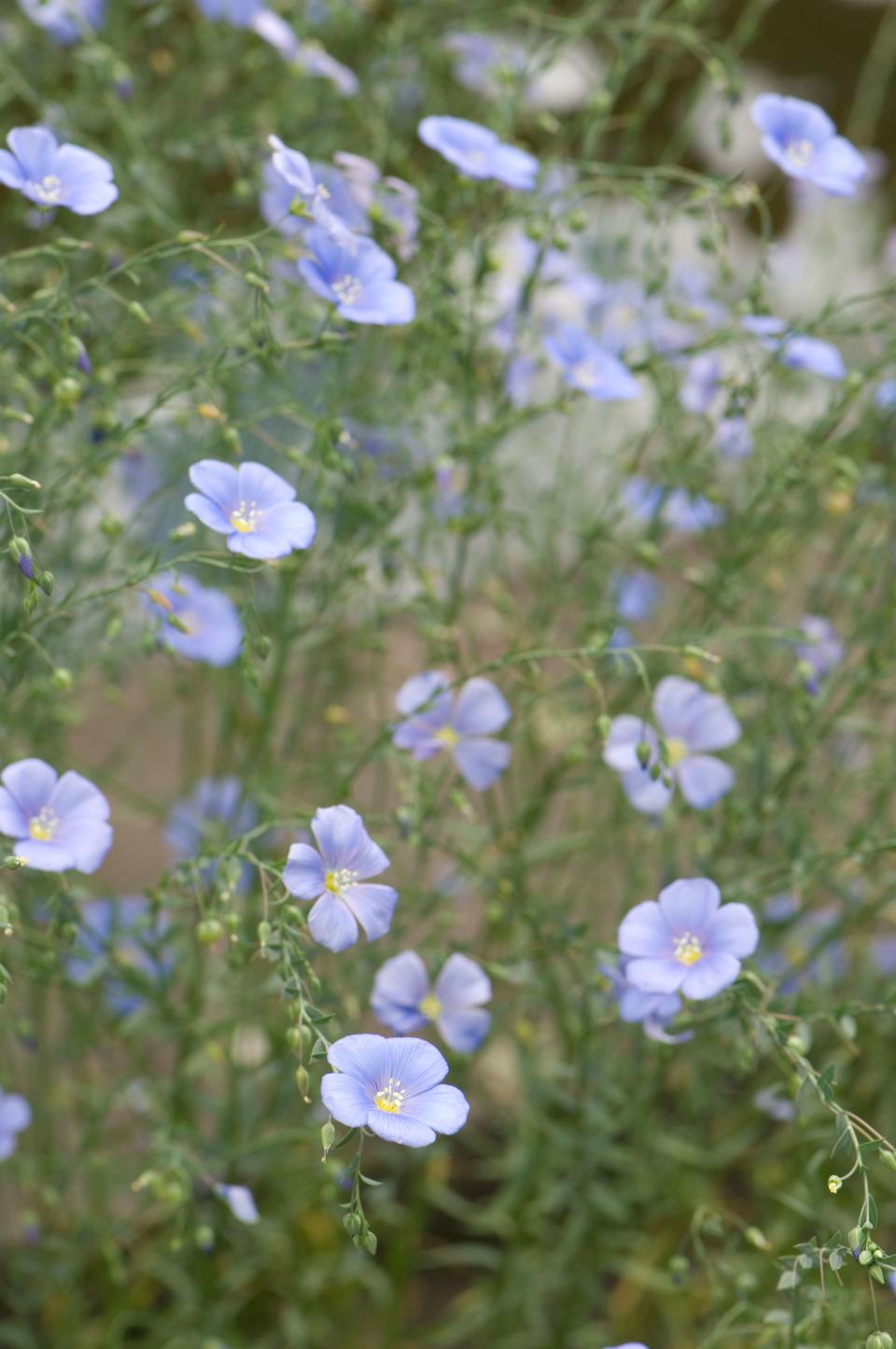
90367285
Linum narbonense (a.k.a. Spanish flax or blue flax)
"Spanish flax is a delicate-looking, clear blue flower with dark blue highlights. The precious look of the flower can be deceptive, as these lovelies are wonderful in harsh soil conditions, as well as drought-resistant. The Manscapers crew has found these late spring bloomers close to indestructible, for those who have labeled themselves a 'black thumb.'"
Vernonia lindheimeri v. leucophylla (a.k.a. silver ironweed)
"This is a great unexpected accent throughout a natural, meadow-style garden. The thin, silver-white foliage has a soft, dusty look and they bloom a bright pink blossom in midsummer. The upright stems are great for limey soil and dry growing conditions."
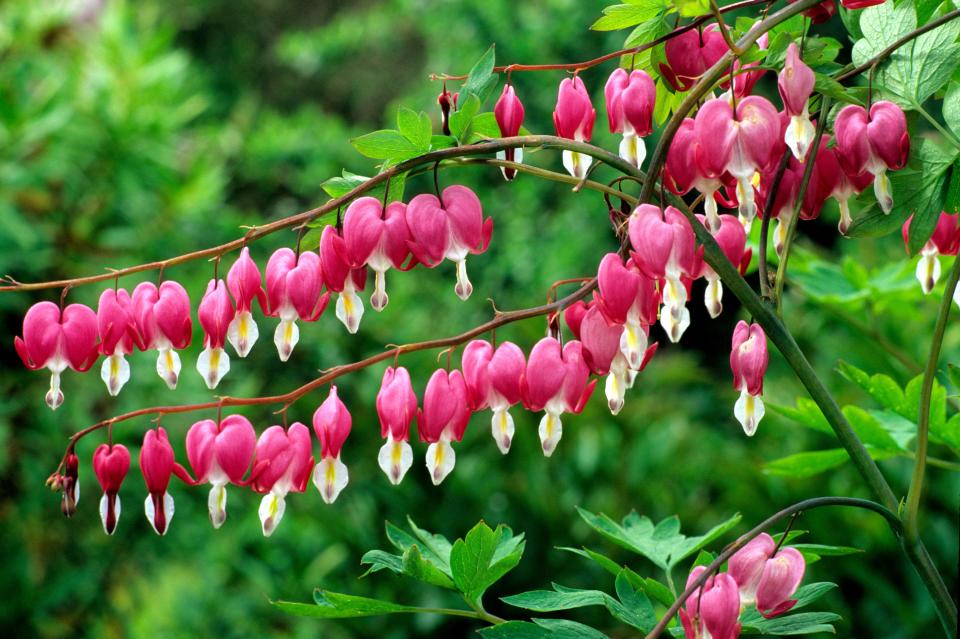
640120565
Dicentra spectabilis (a.k.a. bleeding heart)
"These have not only the most poetic name of any flowers that we use, but have such a poetic look and feel as well. Full to part sun and plenty of drainage make these spring bloomers flourish."
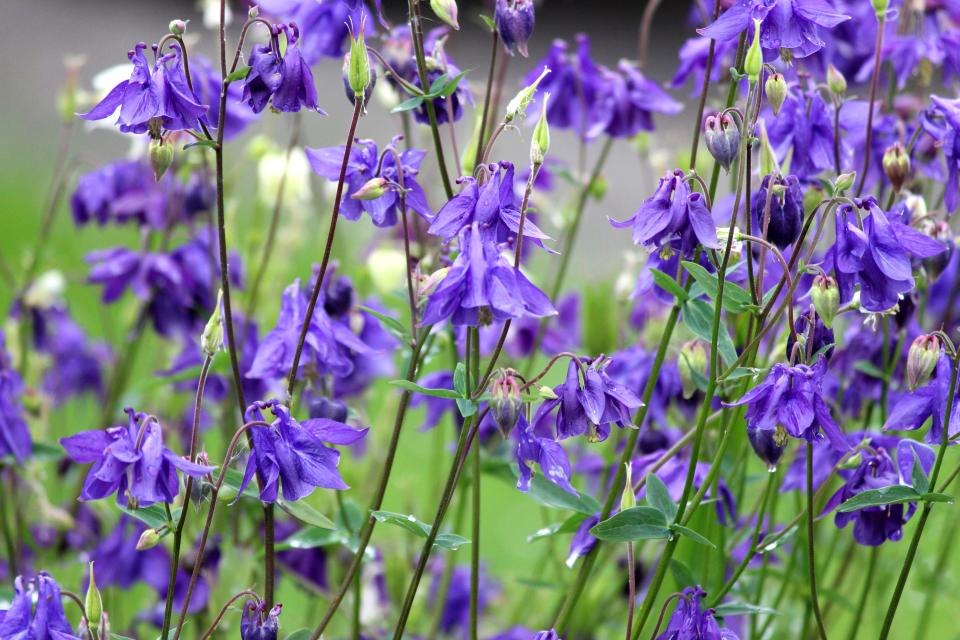
494398467
Columbine (a.k.a. Granny's bonnet)
"These flowers are found in meadows and woodlands and are known for the long narrow 'spurs' that come streaming horizontally out of the back of the flower. These unique beauties come in a variety of colors and are a favorite of hummingbirds."
Edible Gardens L.A. founder Lauri Kranz's picks
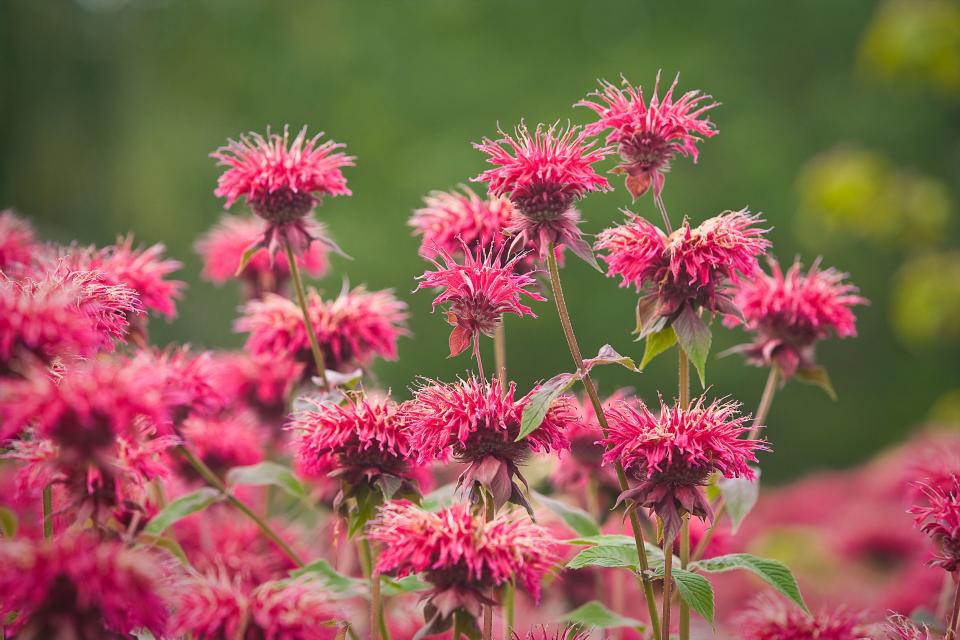
123529439
Monarda (a.k.a. bee balm)
"I love the purple flowers and the wild beauty of the plant itself," says Lauri, who is also the author of the new book A Garden Can Be Anywhere: Creating Bountiful and Beautiful Edible Gardens. "Bee balm draws bees and hummingbirds to the garden, and I like using the flowers in floral arrangements. You can also dry bee balm and use the flowers and leaves to make a healing tea. Bee balm is soothing and also helps with colds, the flu, and stomach upset and nausea."
Daucus carota 'Dara' (a.k.a. Ammi seeds or wild carrot flowers)
"I love the Dara variety with its shades of deep purple, dusty pink, and white. I enjoy using them as a beautiful part of a flower cutting garden."

135608025
Nigella
"These are beautiful, both when in bloom and when their seed heads develop after the flowering is finished. I like to dry the seed heads and use them in dried floral arrangements. My favorite varieties include Delft Blue, Love-in-a-Mist, and Bridal Veil."

154931786
Scabiosa (a.k.a. pincushion flowers)
"A great cut flower and bees love these blooms. My favorites include Black Knight, Fire King, and Fata Morgana."

505550613
Various exotic poppies
"My favorite varieties include Hungarian Blue Breadseed, Elka White, Lauren's Grape, Black Peony, Jimi's Flag, Jimi's Purple Haze, and Black Swan. Edible Gardens L.A. combines many of our favorites into one mixed variety seed pack."
Home and garden designer Nick Spain's picks
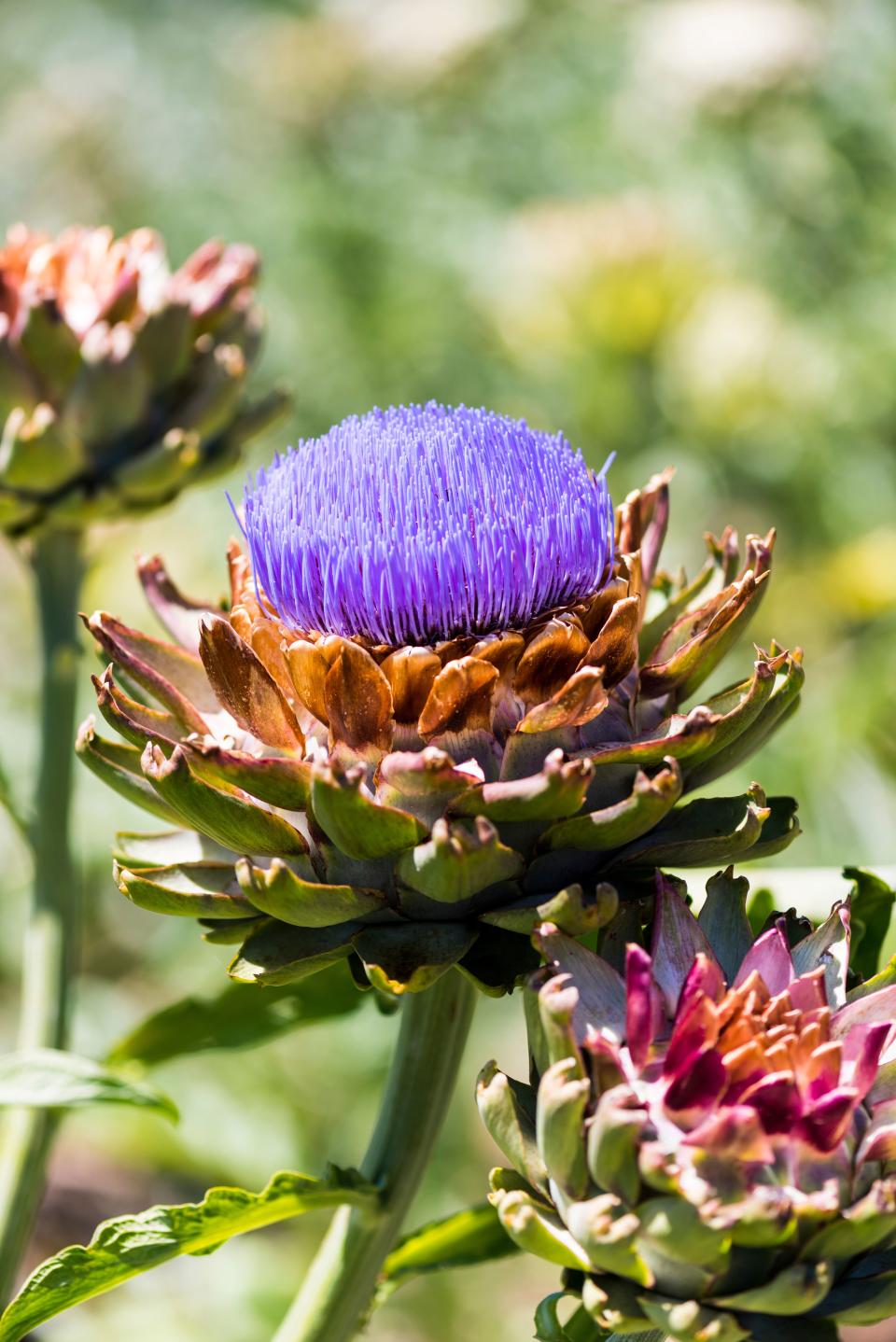
661838333
Artichokes
"A lot of fuss is made over eating artichokes, but not enough is said about their ornamental value," says Nick, founder of design studio Arthur’s. They can be a bit finicky and require some space, but their spiny, silvery stems and serrated leaves create an unexpected textural contrast in a planting scheme. Armor-like bracts open in late summer to reveal an otherworldly purple that feels straight out of Little Shop of Horrors."
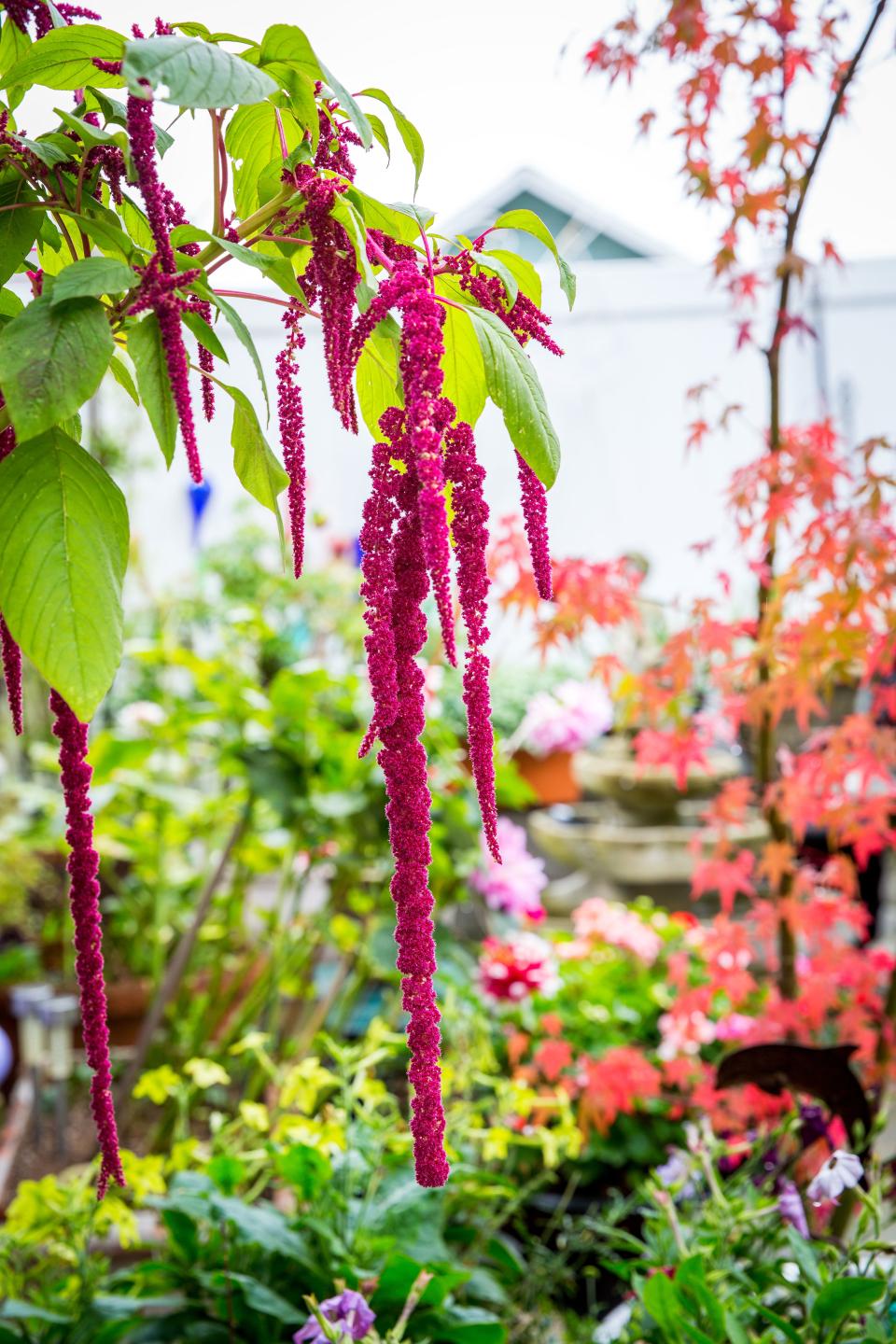
1056029528
Amaranthus caudatus ‘Mira’
"I’ve been obsessed with all kinds of amaranth ever since I first saw Metaflora using it in her arrangements a few years ago, and this cultivar is a particular favorite. Easy to grow, it has a fuchsia color and an extremely long, weeping form that stand outs against the rest of a garden’s flowers, more so resembling a wig you might expect to see twirling around on top of the head of a RuPaul’s Drag Race contestant during a lip-sync battle. Since it takes about 80 days to go from seed to flower, it's important to plan accordingly." [Editor's note: We are equally obsessed with amaranthus.]

509364449
Dahlia 'Verrone's Obsidian'
"The American Dahlia Society lists over two dozen different types of dahlias, many of which have the kind of billowing double blooms you might expect to see in a Vermeer painting. Verrone’s Obsidian is the exact opposite of those—this single-orchid variety’s wiry, blood-red petals read jet black in the August landscape and remind me of something my nieces and nephew might draw if I gave them a couple of crayons and prompted them to show me what a flower looks like. Sorry, Johannes, sometimes five-year-olds do it better."

